Electric Transmission

What are the key components of a CHEV's drive system ?
The key components of a CHEV's drive system include the engine, electric motor, transmission, battery pack, and energy management system. The engine generates the majority of the power needed to propel the vehicle, while the electric motor provides additional power during acceleration or hill climbing. The transmission transfers power from the engine and electric motor to the wheels, and may be a conventional automatic or manual transmission or a specialized hybrid transmission. The battery pack stores electrical energy generated by the electric motor during regenerative braking and provides power to the electric motor when needed. The energy management system controls the flow of energy between the engine, electric motor, and battery pack, determining when to use each source of power based on driving conditions, state of charge of the battery, and driver demand. These components work together to provide a seamless driving experience while maximizing fuel efficiency and reducing emissions.

How does a Compound Hybrid Electric Vehicle work ?
A compound hybrid electric vehicle (CHEV) is a type of hybrid vehicle that combines the power of an internal combustion engine (ICE) with two or more electric motors, aiming to improve fuel efficiency, reduce emissions, and increase overall performance. The system intelligently manages multiple power sources to provide an efficient, powerful, and environmentally friendly driving experience.

How do maintenance costs compare between electric and traditional cars ?
The text compares the maintenance costs of electric cars and traditional gasoline-powered vehicles. Electric cars don't require oil changes but may need battery replacement, which is costly. They use regenerative braking, reducing brake wear. Despite their weight causing faster tire wear, they have a simplified cooling system and minimal transmission maintenance. Traditional cars require regular oil changes, engine maintenance, and frequent brake replacements. They generally weigh less, resulting in slower tire wear but have a complex cooling system and multi-speed transmissions that need regular maintenance. Overall, electric cars have lower maintenance costs due to fewer moving parts and no need for certain maintenance items like oil changes and engine tune-ups. However, individual driving habits and local repair costs should be considered when comparing maintenance expenses.

What is the role of encryption in securing data transmission ?
Encryption is crucial for securing data transmission by converting plain text into unreadable ciphertext, ensuring confidentiality, integrity, and authentication. It protects sensitive information, prevents data tampering, enhances trust, complies with regulations, and reduces the risk of data breaches. Two main types of encryption are symmetric and asymmetric encryption, each using different keys for encryption and decryption.

What are the key components of a Series Hybrid Electric Vehicle ?
Key components of a series hybrid electric vehicle (SHEV) include the battery pack, electric motor, internal combustion engine (ICE), generator, transmission, control unit, and regenerative braking system. The battery pack stores energy from the ICE or regenerative braking system and provides it to the electric motor when needed. The electric motor drives the wheels of the vehicle, while the ICE generates electricity to charge the battery pack rather than directly powering the wheels. The generator converts mechanical energy from the ICE into electrical energy to charge the battery pack. The transmission transfers power from the electric motor to the wheels using a single-speed reduction gearbox. The control unit manages the flow of energy between the various components and optimizes their operation. Finally, the regenerative braking system captures energy lost during braking and uses it to recharge the battery pack, increasing fuel efficiency and extending the range of the vehicle.

How does a Series Hybrid Electric Vehicle compare to a Parallel Hybrid Electric Vehicle ?
Comparison between Series Hybrid Electric Vehicle and Parallel Hybrid Electric Vehicle highlights the differences in power transmission, battery dependency, fuel efficiency, performance, cost, complexity, and regenerative braking capabilities of both types. The series hybrid is more efficient for city driving, while the parallel hybrid suits highway driving better. The choice depends on the user's driving habits and needs, with both offering environmental and economic benefits over traditional vehicles.

How do communication protocols ensure data integrity and security during transmission ?
The text discusses the role of communication protocols in ensuring data integrity and security during transmission. It outlines mechanisms such as checksums, sequence numbers, acknowledgments for maintaining data integrity, and encryption, authentication, and secure protocols for ensuring data security. The article emphasizes that adhering to these rules allows devices to communicate reliably and securely over networks.
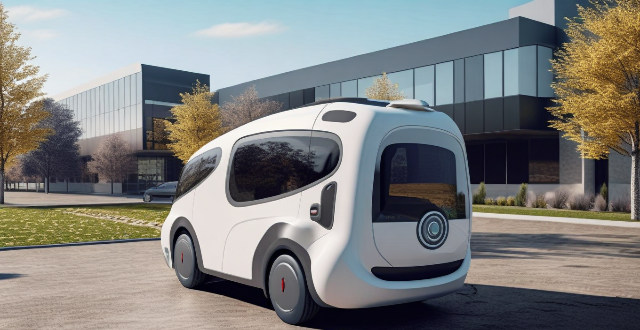
What is the maintenance required for a Series Hybrid Electric Vehicle ?
Maintaining a series hybrid electric vehicle (HEV) involves regular checks and replacements similar to conventional gasoline-powered vehicles, along with specific tasks for the electric components. These tasks include tire rotation and air pressure checks, battery state of charge monitoring, brake fluid exchange, oil changes, air filter replacement, spark plug inspection, belt and hose checks, electrical system maintenance such as battery pack health checks, electric motor lubrication, and inverter/converter diagnostics. Additional tips include following manufacturer guidelines, using genuine parts, scheduling regular check-ups, familiarizing with drive modes, avoiding heavy loads, keeping the interior tidy, and carrying an emergency kit.

How does a parallel hybrid electric vehicle (PHEV) work ?
Parallel hybrid electric vehicles (PHEVs) are a type of hybrid vehicle that combines an internal combustion engine (ICE) with an electric motor. The two power sources can work independently or together, depending on the driving conditions. PHEVs have three operating modes: ICE only, electric motor only, and combined power. The energy management system controls the operation of the ICE and electric motor, deciding which power source to use based on driving conditions, battery state of charge, and other factors. PHEVs offer benefits such as improved fuel efficiency, reduced emissions, tax incentives, and reduced dependence on fossil fuels.

How does a Series Hybrid Electric Vehicle work ?
A series hybrid electric vehicle (SHEV) is a type of hybrid car that utilizes two power sources: an internal combustion engine (ICE) and an electric motor. The ICE generates electricity to charge the battery pack, which in turn powers the electric motor to propel the vehicle. The main components of a series hybrid electric vehicle include the ICE, battery pack, and electric motor. The working process of a series hybrid electric vehicle involves starting the vehicle with the electric motor drawing power from the battery pack, driving at low speeds or during city driving using only the electric motor, increasing speed or accelerating by starting up the ICE to generate electricity and charge the battery pack, regenerative braking to convert kinetic energy into electrical energy and store it in the battery pack, charging the battery pack when its state of charge falls below a certain level, steady-state driving on highways with the ICE running at its optimal speed while the electric motor provides necessary power, and shutting down both the ICE and electric motor when the vehicle is turned off. Series hybrid electric vehicles offer benefits such as improved fuel efficiency, lower emissions, reduced wear and tear on the ICE, and regenerative braking.

Can you explain the powertrain configuration of a CHEV ?
The powertrain configuration of a CHEV includes an ICE, EM, battery pack, transmission, and control unit. The ICE burns fuel to produce energy, while the EM provides additional power during acceleration or hill climbing. The battery pack stores electrical energy generated by the EM and regenerative braking systems. The transmission transfers power from the engine and electric motor to the wheels. Finally, the control unit monitors and manages all these components for smooth transitions between different driving modes.

How does the maintenance cost of fuel vehicles compare to that of electric cars ?
The text discusses the comparison of maintenance costs between fuel vehicles and electric cars. It mentions that fuel vehicles typically require regular maintenance such as oil changes, air filter replacements, and spark plug checks. On the other hand, electric cars generally require less frequent maintenance than fuel vehicles. They do not have traditional engine oil, so oil changes are not necessary. However, they still require regular checks on the battery, brakes, and suspension system. Fuel vehicles often require more frequent maintenance due to their complex internal combustion engines and various fluids that need to be changed regularly. This includes oil changes every few thousand miles, as well as other routine services like brake pad replacements and tire rotations. Electric cars typically require less frequent maintenance because they have simpler drivetrains with fewer moving parts. Battery health is an important aspect of electric car maintenance, but it generally does not require as many check-ups as a traditional engine would. The cost of parts and labor for fuel vehicles can vary widely depending on the make and model of the vehicle, as well as the specific services required. However, fuel vehicles often have more expensive repairs due to their complexity and the number of moving parts involved. While electric cars may initially have higher upfront costs for batteries and specialized components, their maintenance costs tend to be lower in the long run because they require less frequent servicing and have fewer parts that need replacing.
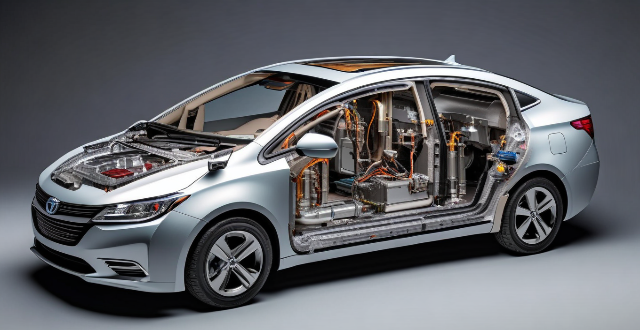
What maintenance is required for a hybrid car ?
Maintaining a hybrid car involves regular checks on the battery health and cooling system, brake inspections, tire care, engine oil changes, coolant flushes, electric motor lubrication, transmission fluid checks, and adhering to scheduled services. Proper maintenance ensures the longevity of high-value components like the battery and electric motor, contributing to improved fuel economy and reduced emissions.

How efficient is a Series Hybrid Electric Vehicle ?
Series hybrid electric vehicles (SHEVs) combine internal combustion engines and electric motors to power wheels, offering efficiency benefits through regenerative braking, engine optimization, and electric drive. However, added weight, system complexity, and battery depletion can be drawbacks. The efficiency of SHEVs hinges on design and driving habits.

How do electric car batteries work ?
Electric car batteries are the powerhouse of electric vehicles (EVs). Here's a detailed explanation: 1. Basics of an Electric Car Battery 2. Charging Process 3. Discharging Process (Driving the Car) 4. Battery Management System (BMS) 5. Benefits and Challenges

What are the best electric cars on the market ?
The article discusses the top electric cars on the market, including the Tesla Model S, Chevrolet Bolt EV, Nissan Leaf Plus, Audi e-tron, and Hyundai Kona Electric. Each car is described in terms of its range, price, features, and performance. The article concludes that there are many great electric cars available, each offering a unique combination of features and benefits to meet different needs and budgets.
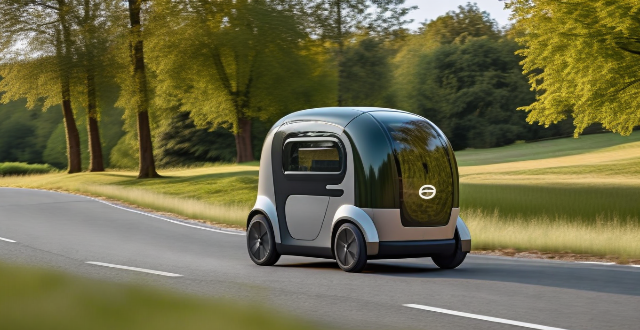
What is a CHEV (Compound Hybrid Electric Vehicle) ?
This article provides an overview of Compound Hybrid Electric Vehicles (CHEVs), which are a unique type of hybrid vehicle that combines the features of both conventional hybrid electric vehicles (HEVs) and plug-in hybrid electric vehicles (PHEVs). The article discusses the design and operation of CHEVs, including their main components such as the internal combustion engine, electric motor, battery pack, and transmission. It also highlights the benefits of CHEVs, such as improved fuel efficiency, lower emissions, enhanced performance, and greater flexibility for drivers. The article concludes by stating that CHEVs have the potential to revolutionize transportation and that we can expect to see more of them in the future as advancements in battery technology continue.

What is a Series Hybrid Electric Vehicle (SHEV) ?
A Series Hybrid Electric Vehicle (SHEV) is a type of hybrid vehicle that uses an internal combustion engine and an electric motor to power the wheels. The engine generates electricity to charge the battery pack or provide power to the electric motor, which then drives the wheels. Some SHEVs have regenerative braking systems that capture energy during braking and use it to recharge the battery pack. Advantages of a SHEV include improved fuel economy, reduced emissions, increased torque, and quiet operation. Disadvantages include complexity, weight, limited range, and higher cost.

How can Smart Grid Technology improve energy efficiency ?
Smart grid technology is transforming the energy sector by integrating advanced communication technologies, automated controls, and innovative sensors to create a more efficient, reliable, and sustainable energy system. Key features of smart grid technology include Advanced Metering Infrastructure (AMI), Distributed Energy Resources (DERs), Demand Response (DR) Programs, and Electric Vehicles (EVs). The benefits of smart grid technology on energy efficiency include improved load management through peak shaving, demand side management, and dynamic pricing; increased renewable energy integration through microgrids, grid balancing, and energy storage systems; optimized transmission and distribution through self-healing networks, predictive maintenance, and reduced transmission losses; and enhanced customer engagement and participation through consumer education, incentives for energy efficiency, and community solar programs. Overall, smart grid technology offers numerous opportunities to improve energy efficiency across various sectors of the energy industry while transitioning towards a more sustainable future with reliable and efficient energy delivery for all consumers.
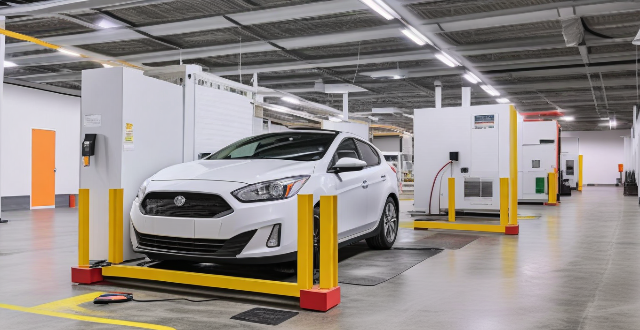
How does an electric car work ?
Electric cars, or EVs, are powered by electricity stored in a battery pack, which is used to power an electric motor that turns the wheels. The process includes starting the car with power from the battery to the controller, which then sends electricity to the motor for acceleration. Braking involves regenerative braking that captures energy to recharge the battery. Charging the battery requires plugging into an external power source managed by an onboard charger. Electric cars boast higher energy efficiency, lower operating costs, reduced environmental impact, quieter operation, and simpler maintenance compared to traditional gasoline vehicles.

Are CHEVs more expensive to maintain compared to regular hybrid vehicles ?
The article discusses the maintenance costs of Chevrolet (CHEV) and regular hybrid electric vehicles (HEVs), which are both designed to reduce fuel consumption and emissions. The powertrain configurations and operational strategies of CHEVs and regular HEVs differ, with CHEVs typically having a larger battery pack and prioritizing using electricity from the battery before switching to gasoline, while regular HEVs use both gasoline and electricity simultaneously or alternate between them based on driving conditions. Regarding maintenance costs, CHEVs may require more frequent battery replacements due to their larger size and higher usage, but their engines may experience less wear and tear since they spend more time in electric mode. On the other hand, regular HEV engines may require more maintenance due to constant switching between gasoline and electric power, but they generally have smaller batteries that last longer. In terms of transmission maintenance, CHEV transmissions may be simpler since they rely primarily on electric motors, while regular HEV transmissions may be more complex due to the need to manage both gasoline and electric power sources. Tire maintenance may also differ between CHEVs and regular HEVs, with CHEV tires potentially wearing differently due to regenerative braking systems, while regular HEV tires may not experience significant differences in wear patterns compared to traditional gasoline vehicles. Overall, while CHEVs may have higher initial costs due to their larger battery packs, they could potentially save money in the long run by reducing engine maintenance needs. However, regular HEVs might require less frequent battery replacements and simpler transmission maintenance. It is essential to consider individual driving habits and vehicle usage when evaluating maintenance costs for CHEVs and regular HEVs.

What are the advantages of using hub motors in electric vehicles ?
Hub motors offer several advantages for electric vehicles, including a simplified design, improved efficiency, enhanced performance, low maintenance requirements, quiet operation, space savings, and environmental benefits.
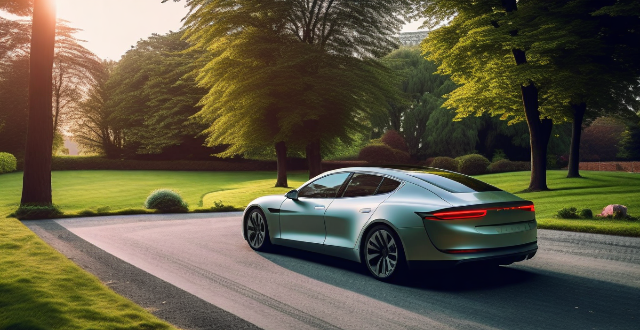
Is it worth investing in an electric car ?
Investing in an electric car requires consideration of advantages like environmental benefits and lower operating costs, as well as disadvantages such as limited range and higher upfront costs. Factors to consider include driving habits, financial situation, environmental concerns, and future developments. By carefully weighing these factors, one can determine if an electric car is the right choice.
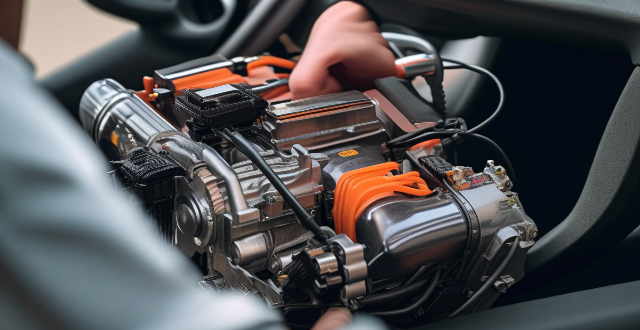
What are the advantages of a Series Hybrid Electric Vehicle ?
Series HEVs offer improved fuel efficiency, reducedSeries HEVs offer improved fuel efficiency, reduced and cost savings compared to conventional reduced emissions, enhanced performance, and cost savings compared to conventional vehicles. They use an internal combustion engine and an electric motor to power the vehicle, resulting in lower fuel consumption and emissions. Regenerative braking further improves fuel efficiency by converting kinetic energy into electrical energy. Series HEVs also provide instant torque for better performance and require no traditional transmission, reducing maintenance costs. Additionally, they have lower operating costs and may qualify for tax credits and incentives. Overall, series HEVs offer a more sustainable and environmentally friendly option for transportation.
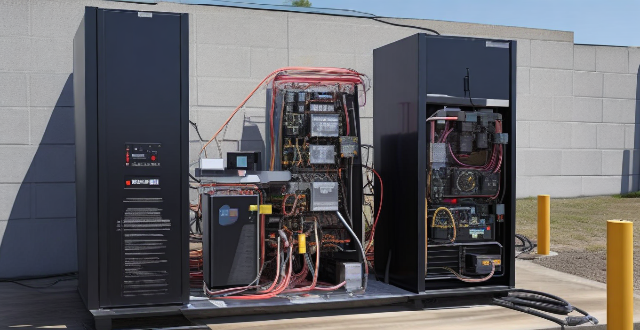
What are the maintenance requirements for a parallel hybrid electric vehicle (PHEV) ?
Maintenance Requirements for a Parallel Hybrid Electric Vehicle (PHEV) include regular check-ups of the battery system, engine maintenance such as oil changes and air filter replacement, transmission maintenance including fluid checks and cooler maintenance, tire rotation and pressure adjustment, brake pad and rotor replacement, suspension maintenance like shock and strut replacement, and other tasks such as coolant system checks, wiper blade replacement, and light bulb checks. By following these requirements, you can ensure your PHEV runs smoothly and safely.

Are electric cars more expensive than gasoline cars ?
Electric cars, also known as EVs, have been gaining popularity due to their eco-friendly nature and lower operating costs. However, the initial purchase price of an electric car is often higher than that of a traditional gasoline-powered car. In this article, we will explore the cost differences between electric and gasoline cars. ## Upfront Cost **Electric Cars:** - Higher upfront cost due to expensive battery technology and limited production scale. - Prices vary depending on the model, brand, and range. - Some governments offer incentives and tax credits to offset the high initial cost. **Gasoline Cars:** - Generally less expensive upfront compared to electric cars. - Wide variety of models and brands available at different price points. - No government incentives or tax credits for purchasing a gasoline car. ## Operating Costs **Electric Cars:** - Lower operating costs due to cheaper electricity rates compared to gasoline prices. - Maintenance costs are generally lower since there are fewer moving parts in an electric motor. - Battery replacement can be costly, but it is not expected until after several years of use. **Gasoline Cars:** - Higher operating costs due to fluctuating gasoline prices and regular maintenance requirements. - More frequent oil changes, tune-ups, and other routine maintenance tasks. - Fuel efficiency varies widely among gasoline cars, affecting overall operating costs. ## Depreciation **Electric Cars:** - Depreciation rate may be higher for electric cars due to rapid advancements in technology and changing consumer preferences. - Some early adopters may experience significant depreciation if they choose to sell their electric car before its battery lifespan ends. **Gasoline Cars:** - Generally slower depreciation rate compared to electric cars. - Well-maintained gasoline cars can retain their value for longer periods. ## Resale Value **Electric Cars:** - Resale value depends on factors such as battery health, range, and charging infrastructure availability. - As more people switch to electric cars, the demand for used electric vehicles may increase, potentially boosting resale values. **Gasoline Cars:** - Resale value is typically more predictable and stable compared to electric cars. - Factors such as fuel efficiency, brand reputation, and vehicle condition affect resale value. In conclusion, while electric cars may have a higher upfront cost, they offer lower operating costs and potentially better resale value in the future. It's essential for consumers to consider both short-term and long-term costs when deciding between an electric or gasoline car.
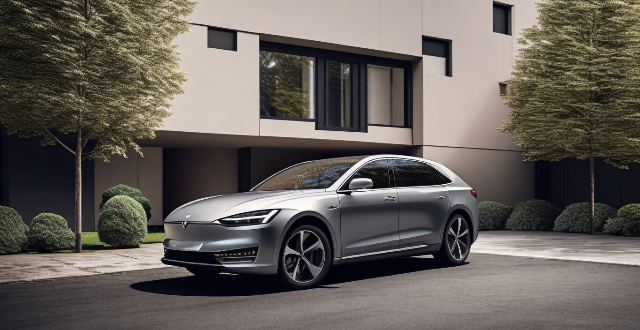
Can you drive a hybrid car in electric mode only ?
Hybrid cars offer the fuel efficiency of electric vehicles and the range of gasoline-powered cars. Some hybrids can drive in electric mode under certain conditions, such as battery charge level and speed. Advantages include reduced emissions and a quieter driving experience, but there are also drawbacks like limited range and slower acceleration. Examples include the Toyota Prius and Honda Insight.

What are the environmental impacts of electric cars ?
Electric cars, also known as EVs (Electric Vehicles), have become increasingly popular in recent years due to their potential to reduce greenhouse gas emissions and improve air quality. However, like any other technology, electric cars also have some environmental impacts that need to be considered. In this article, we will discuss the various environmental impacts of electric cars. One of the most significant environmental benefits of electric cars is their ability to reduce greenhouse gas emissions. Compared to traditional gasoline-powered vehicles, electric cars produce zero tailpipe emissions. This means that they do not release harmful pollutants such as carbon dioxide, nitrogen oxides, and particulate matter into the atmosphere. As a result, electric cars can help reduce air pollution and improve public health. The environmental impact of electric cars also depends on the source of energy used for charging them. If the electricity used to charge an electric car comes from renewable sources such as wind or solar power, then the overall environmental impact is positive. However, if the electricity comes from coal-fired power plants or other non-renewable sources, then the environmental benefits are reduced. It is essential to ensure that the electricity used for charging electric cars comes from clean and sustainable sources. The production of lithium-ion batteries used in electric cars has some environmental impacts. The mining and processing of raw materials required for battery production can lead to water pollution, soil contamination, and habitat destruction. Additionally, the disposal of spent batteries can pose challenges as they contain toxic chemicals that can harm the environment if not disposed of properly. Recycling programs and research into alternative battery technologies can help mitigate these impacts. The manufacturing process of electric cars also has some environmental impacts. The production of electric car components requires energy and resources, which can lead to greenhouse gas emissions and other forms of pollution. However, compared to traditional gasoline-powered vehicles, electric cars generally have a lower environmental impact during the manufacturing process due to their simpler design and fewer moving parts. To fully understand the environmental impacts of electric cars, it is essential to consider their entire lifecycle, including raw material extraction, manufacturing, use, and disposal. A comprehensive lifecycle analysis can help identify areas where improvements can be made to reduce the overall environmental impact of electric cars. This may include using more sustainable materials, improving energy efficiency during manufacturing, and developing better recycling programs for spent batteries. In conclusion, while electric cars offer significant environmental benefits over traditional gasoline-powered vehicles, they also have some environmental impacts that need to be considered. By addressing these issues through sustainable practices and continued research, we can maximize the positive environmental impacts of electric cars and work towards a cleaner, greener future.
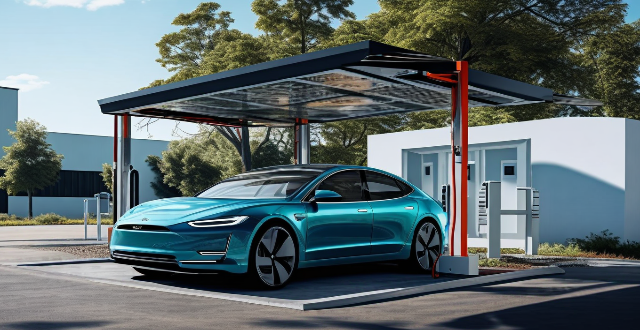
How do electric car charging stations work ?
Electric car charging stations are essential facilities for powering electric vehicles, utilizing off-board conductive charging to transfer electricity. They come in three main types based on power output and charging speed: Level 1 (slowest, using standard domestic sockets), Level 2 (faster, requiring special EV charging units), and DC Fast Charging (Level 3, fastest, primarily for highway use). The charging process involves connecting the charger, activating it, transferring power (AC for Level 1&2, DC for Level 3), regulating and monitoring battery charging, and disconnecting once complete. Safety features include GFCIs, temperature monitoring, and smart software. Environmental impact depends on the electricity source; green energy sources enhance sustainability, while fossil fuels reduce benefits. As technology advances, these stations will contribute more significantly to a cleaner transport sector.